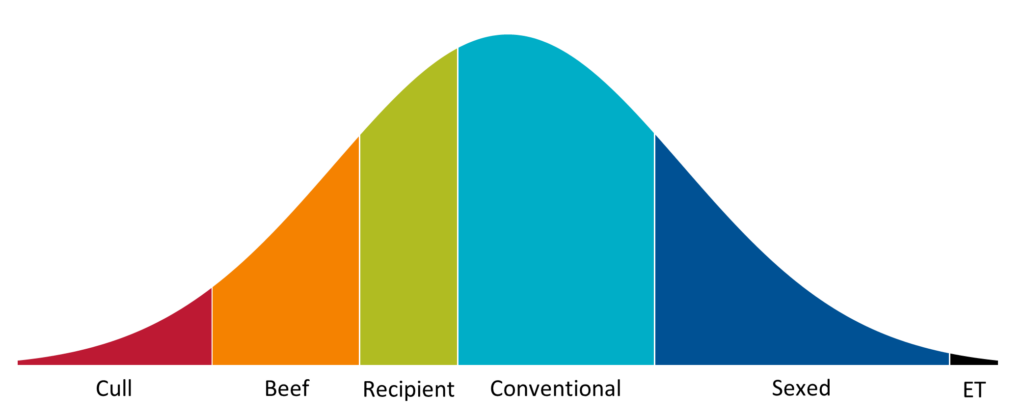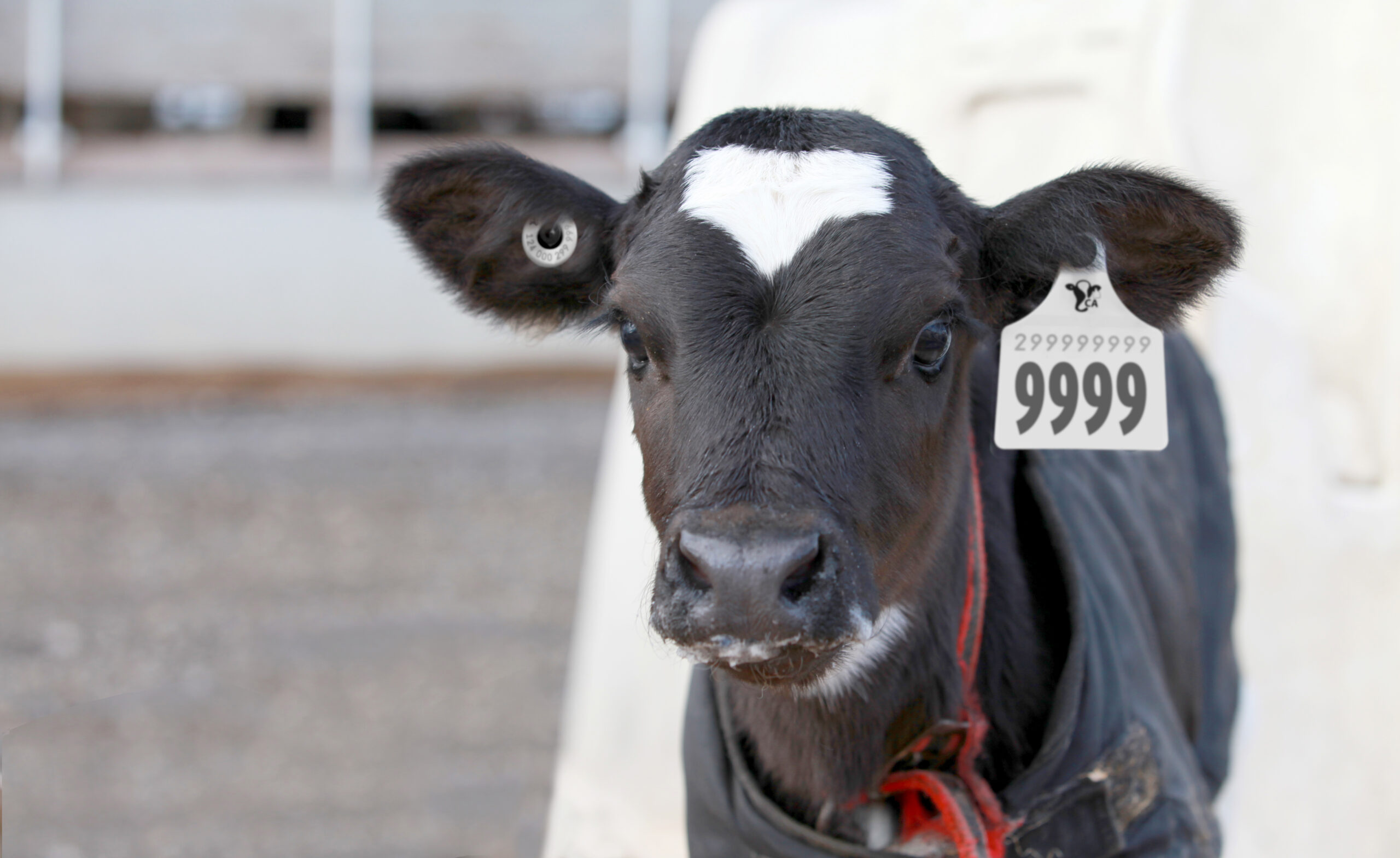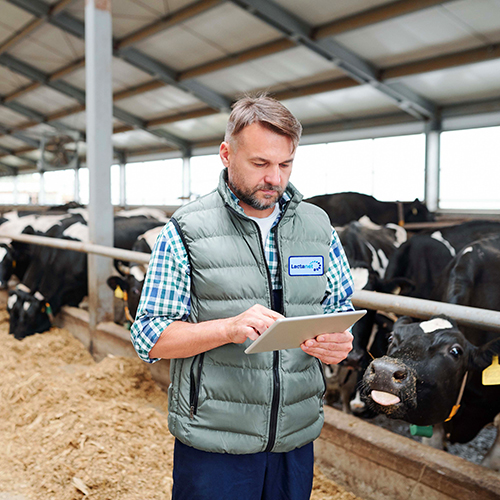How to Maximize Genetic Progress in Your Herd
- December 4, 2023
When it comes to reaching your herd goals, selecting which animals as parents of the next generation in your herd is arguably one of the most important decisions. With so much valuable information available today, what are the key areas to focus on to maximize your herd’s genetic potential and reach your goals faster?
Achieving Genetic Progress
The rate of genetic gain per year within each dairy breed continues to improve year over year. This progress in genetic improvement is dependent on four key factors including genetic variation, selection intensity, accuracy of selection and generation interval. Let’s dive into each of these areas further:

Genetic Variation: The genetic variability of a trait. Without some level of genetic variation there would be no differences between animals and therefore no opportunity for genetic selection. The genetic variation of a trait does not change significantly over time and is therefore not a significant factor affecting the genetic gain realized in your herd compared to others.
Selection Intensity: How many animals you choose to breed the next generation and how genetically superior they are. You’ll make faster progress if you select only the highest ranked sires and mate them to the highest genetic females in your herd to produce the next generation of heifers for your herd.
Accuracy of Selection: This is reflected by the level of Reliability of the genetic evaluations used to make selection and mating decisions, which can vary depending on the trait heritability, inclusion of genomics, and the amount of performance and pedigree data available.
Generation Interval: The average age of selected parents when their offspring are born.
Dairy farmers can maximize the rate of genetic progress in their herd when selection intensity and accuracy are high while the generation interval is as low as possible.
Four Pathways to Selection
To put this in practice in the context of dairy cattle breeding we need to consider the four distinct pathways to selection illustrated in Figure 1.
Figure 1: The Four Pathways to Dairy Cattle Selection

These include the selection of (1) sires to breed bulls, (2) dams to breed bulls, (3) sires to breed cows, and (4) dams to breed cows. The formula for genetic gain outlined above can be calculated within each of these four pathways and then summed to determine the total genetic progress per year within a dairy population, or within a specific herd.
Pathways 1 and 2, which relate to the selection of sires and dams to breed bulls, are mainly used by AI companies and breeders that are selling bulls. For this article, we will focus on pathways 3 and 4, since they relate to the selection of sires and dams to breed cows. After all, deciding which sires to use and dams to breed to create replacements has a big impact on maximizing the rate of genetic progress within your herd and the breed. As outlined previously, the two main factors that drive faster genetic gain are maximizing the accuracy and intensity of selection.
Maximizing the Accuracy of Selection
Genotyping has the biggest influence on the accuracy of selection. The adoption of genomics in most breeds since 2009 has led to more accurate genomic evaluations for bulls and cows across the dairy industry and accelerated the rate of genetic change. For the Holstein, Brown Swiss, Jersey, and Ayrshire breeds, the average LPI Reliability increases by roughly 40, 25, 20, and 15 percentage points through genomic testing of heifers and young bulls, respectively. All bulls offered by A.I. organizations have been genotyped and therefore have an official genomic evaluation published by Lactanet. Genotyping your cows and heifers also contributes to breed improvement and results in a more accurate ranking of your females due to the increased level of Reliability. In addition, genomic testing helps to manage genetic abnormalities within each dairy breed. Genotyping also allows herd owners to test for favourable traits such as polled or milk properties that improve digestibility and/or cheese production. Overall, the more data we have on bulls and cows, including genotypes, the more accurate animals will be ranked and thus the more genetic progress is achievable both in an individual herd and within the breed.
Maximizing Selection Intensity
When it comes to maximizing selection intensity, the focus is selecting the highest ranked sires and dams to produce the next generation. Developing an on-farm breeding plan for intentional selection and mating, such as in Figure 2, can help you decide which reproductive strategies to use for each animal.
This means either culling lower genetic merit animals or using beef semen to produce higher slaughter value crossbred calves while removing the poor genetics from your future herd. For the highest ranked females in your herd, consider using sexed semen to accelerate genetic progress. Keeping in mind this may not be the highest performing cows, it is important to look at where your animals rank from a genetic perspective. The use of embryo transfer (ET) in the dairy industry is another reproductive technology used to create embryos of high genetic merit using the highest ranked sires and dams. Lower genetic merit females can then be used as recipients. Overall, incorporating more A.I. technologies like sexed semen and ET can lead to a large genetic change in your herd in just one generation. In general, by focusing on high genetically ranked males and females as parents of the next generation of replacement heifers also significantly reduces the generation interval, therefore further boosting the rate of genetic progress in your herd.
Figure 2: Example of an on-farm breeding plan using different reproductive strategies

At the end of the day, making genetic progress on your farm equates to higher producing and healthier animals for generations to come. Genetic change is controlled by several factors, but it all starts with genomic testing your heifers and cows and developing a breeding plan that incorporates more reproductive technologies using high genetic merit sires and dams as parents of the next generation.












